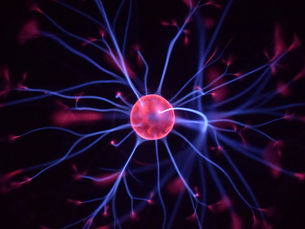top of page
The Bright Insight Blog
Search


The Neural Architecture of Transformation: Bridging Dąbrowski's Theory of Positive Disintegration and Hyperneuroplasticity
Dąbrowski’s Theory of Positive Disintegration anticipated what neuroscience now begins to affirm: certain nervous systems are built for transformation. Hyperneuroplasticity may provide the biological foundation for developmental potential, with the third factor as its governing mechanism and multilevelness as its structural expression.

Dr. Patty Gently
Oct 24, 20259 min read


Hyperneuroplasticity Across the Lifespan
Looking across the lifespan, hyperneuroplasticity emerges as a systemic orientation that permeates every stage of development, rather than a temporary trait to be gained or lost.

Dr. Patty Gently
Sep 14, 20258 min read


Neuroplasticity and Hyperplasticity vs. Hyperneuroplasticity
...HNP provides a useful umbrella for grouping certain forms of neurodivergence. Profiles such as autism, ADHD, giftedness, and trauma-shaped neurodivergence often share systemic hyperresponsiveness: accelerated learning, fluid identity shifts, sensory amplification, and greater susceptibility to both brilliance and destabilization. Seen through the lens of hyperneuroplasticity, these are all variations of a shared underlying orientation toward intensified plastic responsiven

Dr. Patty Gently
Sep 13, 20252 min read


Hyperneuroplasticity, Nitric Oxide, and Dynamic Brain-Body States
Bringing all these seemingly random threads of dynamic brain states, nitric oxide, and neurodivergence together highlights how hyperneuroplasticity involves the intimate coupling of brain and body.

Dr. Patty Gently
Sep 12, 20259 min read


The Hyperneuroplastic Octopus: Master of Neural Adaptation
For humans navigating giftedness, neurodivergence, or trauma recovery, the octopus serves as both metaphor and scientific model. It reminds us of our capacity for deep, systemic change and calls us to radically accept a fluidity that can be both barrier and brilliance.

Dr. Patty Gently
Sep 11, 20258 min read


The Shared Terrain of Hyperneuroplasticity, the Blood-Brain Barrier, and Functional Neurological Disorder (HNP, BBB, EDS, MCAS, POTS, and FND? WTF!!??)
Taken together, hyperneuroplasticity, the blood–brain barrier, EDS, MCAS, dysautonomia, and FND form a constellation of overlapping expressions of a body and brain that are open, sensitive, and dynamic. This reframing points toward interventions that aim to stabilize barriers, modulate immune activity, regulate autonomic flow, and most importantly, harness hyperneuroplasticity constructively through learning, creativity, and self-directed adaptation.

Dr. Patty Gently
Aug 27, 20259 min read


Stress, the Amygdala, and Hyperneuroplasticity
a hyperneuroplastic brain is like a high-speed recorder. It takes a snapshot of stressful or threatening experiences and plays them back on repeat, long after the danger is gone. That rapid wiring can be life-saving in moments of real threat, yet it also explains why stress can leave such deep grooves, making it harder to shake habits of fear, vigilance, or avoidance once they’ve been learned.

Dr. Patty Gently
Aug 18, 20256 min read
bottom of page

